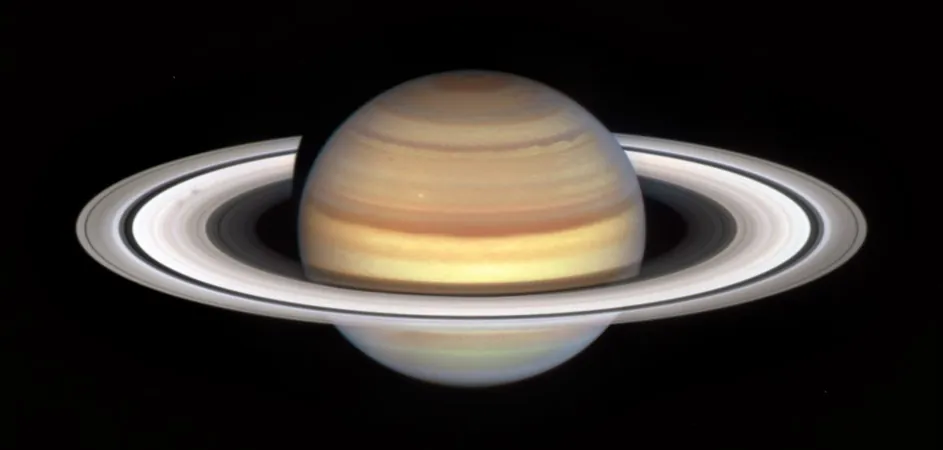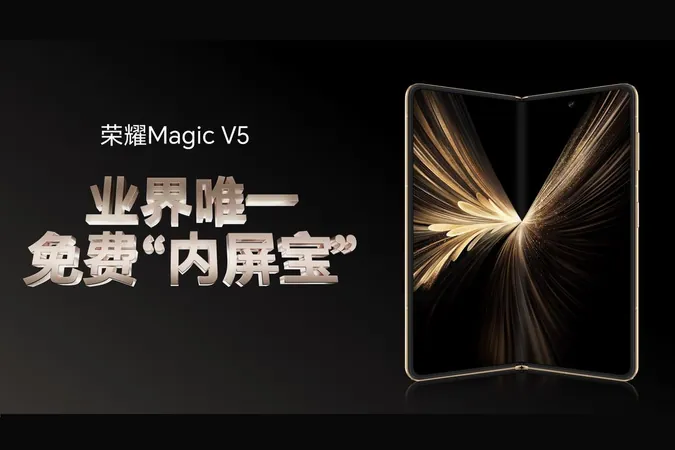
Mystery of Saturn's Rings Deepens: Are They Older Than We Thought?
2024-12-30
Author: Li
Saturn's dazzling rings have captivated astronomers and stargazers alike, standing out as one of the most magnificent features in our Solar System. For centuries, the exact age of these rings has been an enigma: did they emerge in the early days of the Solar System, or are they a more recent addition?
Recent research is shedding light on this cosmic quandary, suggesting that Saturn's iconic rings are indeed much older than previously believed. This revelation stems from the latest findings published in the esteemed journal Nature Geoscience.
Historically, the first glimpse of Saturn's rings came from Galileo, who was baffled by their appearance when he peered at the planet through his primitive telescope in the early 17th century. Initially mistaking them for moons, Galileo's observations changed when he viewed Saturn from different angles, leading him to theorize that they might be 'arms' encircling the planet. It wasn’t until Christian Huygens, almost 50 years later, utilized improved optics that the ring system was correctly identified as thin, flat rings that encircled Saturn.
Our understanding of these mesmerizing rings dramatically evolved with the arrival of space exploration missions. The Voyager spacecraft provided groundbreaking images during their flybys in 1980 and 1981, showcasing the unique features of the rings, including surprising 'spokes' that intrigued scientists. Later, the Hubble Space Telescope elevated our knowledge by revealing the rings' non-uniform structure and previously unseen inner rings.
However, it was NASA’s Cassini mission that truly transformed our perception. From 2004 to 2017, Cassini provided unparalleled insights into Saturn and its intricate ring system, capturing detailed images and data that revealed the dynamic interactions within the rings, such as the gravitational effects of Saturn's moons.
Now, as researchers analyze the data, a new contention arises regarding the age of these rings. While some scientists argue that they date back billions of years, others propose a relatively young age of only 100 million years. The latest study led by Ryuki Hyodo, a planetary scientist associated with JAXA, challenges the younger estimates based on the rings' cleanliness, arguing that their seemingly immaculate appearance might not accurately reflect their actual age.
The crux of this debate lies in the behavior of micrometeoroids colliding with the rings. Earlier models suggested that if micrometeoroids could efficiently accumulate on the icy ring particles, the rings should appear darkened over time. However, Hyodo's team simulated these impacts and discovered that the accumulation may not be as effective as previously thought. Their findings indicate that only around 1% of incoming micrometeoroids could be efficiently assimilated, hinting that Saturn's rings could be older than current models suggest.
Hyodo asserts, "We suggest that the apparent youth of Saturn’s rings could be due to pollution resistance rather than indicative of young formation age," indicating a significant shift in the discourse regarding the formation and age of Saturn's rings.
This research opens up exciting avenues for future studies, as scientists will continue to investigate the intricate mechanisms at play in the evolution of Saturn's rings. While uncertainties still linger, one thing is clear—Saturn's rings are as awe-inspiring as they are mysterious, and new discoveries will undoubtedly keep our fascination alive.




 Brasil (PT)
Brasil (PT)
 Canada (EN)
Canada (EN)
 Chile (ES)
Chile (ES)
 Česko (CS)
Česko (CS)
 대한민국 (KO)
대한민국 (KO)
 España (ES)
España (ES)
 France (FR)
France (FR)
 Hong Kong (EN)
Hong Kong (EN)
 Italia (IT)
Italia (IT)
 日本 (JA)
日本 (JA)
 Magyarország (HU)
Magyarország (HU)
 Norge (NO)
Norge (NO)
 Polska (PL)
Polska (PL)
 Schweiz (DE)
Schweiz (DE)
 Singapore (EN)
Singapore (EN)
 Sverige (SV)
Sverige (SV)
 Suomi (FI)
Suomi (FI)
 Türkiye (TR)
Türkiye (TR)
 الإمارات العربية المتحدة (AR)
الإمارات العربية المتحدة (AR)